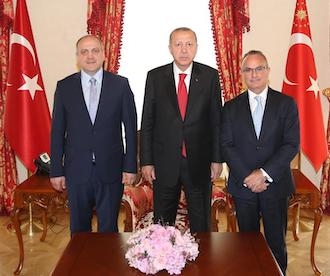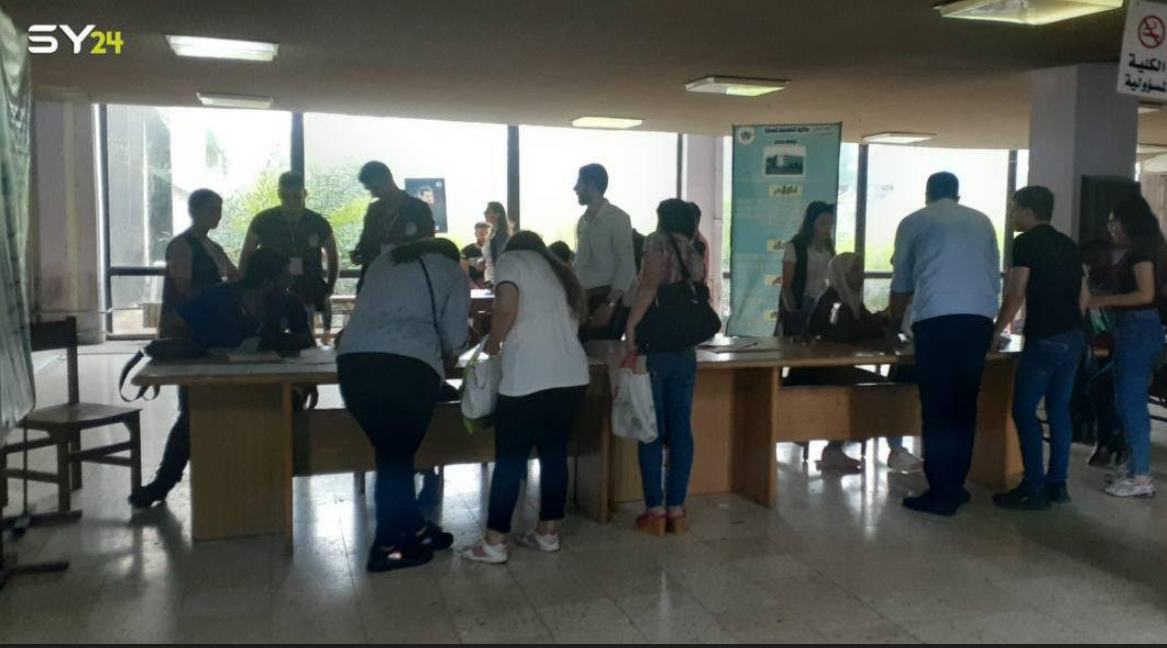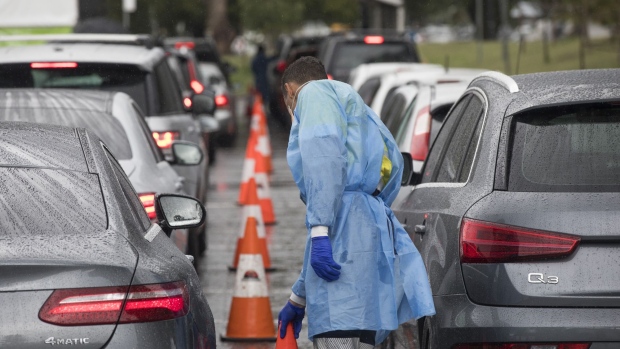Benjamin Baird is the director of Islamism in Politics, a project of the Middle East Forum. Dr. Mehmet Oz implores travelers to fly Turkish Airlines, a company part-owned by Turkey's majority Justice and Development Party, just one of the Senate candidate's numerous entanglements with Turkey's Islamist government. |
After announcing his decision to run for U.S. Senate from Pennsylvania, celebrity doctor Mehmet Oz has been publicly lambasted for peddling "miracle" weight-loss supplements and other medical misinformation. However, Pennsylvania voters should be far more concerned with the daytime television star's connections to Turkey's Islamist government.
Oz's links to Turkey's authoritarian Justice and Development Party (AKP) extend to foreign agents and proxies accused of operating a secret lobby in the U.S. and spying on American citizens. These associations raise urgent questions about the Senate candidate's loyalty to an illiberal, often antagonistic foreign government that finds itself increasingly at odds with American interests.
The Emmy Award–winning host of the Dr. Oz Show entered a crowded field of GOP contenders after announcing his bid to replace retiring senator Pat Toomey in 2022. Critics point to Oz's reputation for hawking dubious supplements and questionable medical advice, in addition to rumors that the heart surgeon continues to live in his northern New Jersey mansion, despite claiming Pennsylvania residency late last year.
However, Oz's backers point to his undeniable name recognition and deep pockets, and with no clear standout candidate in the Republican primary, he may have a fighting chance. That is, if his relationship with bad actors from Turkey's majority AKP stands up to scrutiny.
"I had the privilege, as the son of immigrant parents, to grow up American while staying deeply in touch with my Turkish roots," Oz told SJ Magazine in a 2011 interview. "I have a great deal of family back in Turkey, I lived there for a period as a boy, and I served in the Turkish military, which is compulsory for dual citizenship."
But does Oz continue to serve Turkey's national interests? Critics have called on him to renounce his Turkish citizenship — not because he is legally obligated to do so as a Senate candidate, but out of concern that his loyalties may be divided.
 The extent of Oz's relationship with Turkish President Recep Tayyip Erdoğan (right) is unclear. |
Yet, the doctor's ties to Turkey extend beyond family relations and citizenship status to the highest reaches of government office. This includes a 2014 encounter with President Recep Tayyip Erdoğan, Turkey's increasingly authoritarian Islamist leader.
Oz has met with other AKP leaders as well, including Minister of Justice Abdulhamit Gül, who stood arm-in-arm with the TV doctor during a 2019 Turkish-heritage parade in Brooklyn, N.Y. Less than a year earlier, Gül was personally sanctioned by the U.S. Treasury Department for leading "an entity that has engaged in . . . serious human rights abuses," including the unjust detention of American pastor Andrew Brunson.
Oz has a deep personal stake in Turkish state-business interests. In 2011 the talk-show host was elected to the High Advisory Council of the World Turkish Business Council (DTİK), the international business-lobbying arm of Turkey's Foreign Economic Relations Board (DEİK).
In 2014, the Turkish parliament stripped DEİK of its independent status as a nongovernmental business association and switched it to promoting the interests of President Erdoğan and the AKP. Many Western companies stopped doing business with DEİK after it was absorbed by the state, and U.S. lobbying firms representing DEIK subsidiaries have registered as foreign agents.
 Dr. Oz, left, pictured at a World Turkish Business Council event in 2019 with Gunay Evinch, a registered foreign agent of Turkey. |
Oz participated in DEİK functions as recently as 2019, when he spoke at a DTİK conference in NYC. This event was co-hosted by Gunay Evinch, a foreign agent of Turkey who was retained by the Turkish embassy in 2019 to collect personal information on the AKP's enemies in America. He also represented Erdoğan's bodyguards after they assaulted anti-AKP protestors in Washington, D.C.
Since at least 2017, the celebrity surgeon has served as the public face of Turkish Airlines, Turkey's state-owned commercial airline, which is staffed by leading AKP figures close to the Erdoğan family. He appeared in a lucrative Super Bowl commercial touting the Turkish Airlines, brand and is currently featured in a pre-flight safety video advising passengers on every flight about coronavirus travel tips.
Oz can also be found on the life and communications platform BiP, offering viewers real-time medical advice and "healthy recipes, information on cardiac and mental health, fitness, beauty and motivation." As it happens, BiP is owned by Turkcell, Europe's leading mobile-service provider, which is majority-owned by the Erdoğan-controlled Turkish Wealth Fund after being acquired in 2020 under shady pretenses. Since then, critics worry that the telecommunications giant has been used as a tool of government repression.
In addition to Oz's connections to Turkey's business and government leaders, the Senate candidate is involved with known and suspected AKP proxies. He was the special guest at an October 25, 2019, fundraiser co-sponsored by the Turkish American National Steering Committee (TASC) and the Diyanet Center of America (DCA). Both groups are extensions of the Turkish state.
 TASC co-chairs Halil Mutlu (left) and Gunay Evinch (right) meet with Turkish President Recep Tayyip Erdoğan in Istanbul in July 2019. |
Co-chaired by Erdoğan's cousin, Halil Mutlu, TASC essentially serves as the Turkish president's publicity machine in the U.S. In a spectacle reminiscent of the cult of personality common among totalitarian regimes, TASC commissioned a box truck in September to drive throughout NYC displaying digital images of the Turkish president with the caption: "Love Erdoğan."
DCA is a massive religious center located just outside the Beltway that hosts diplomatic functions for Erdoğan and the ruling AKP. Pro-AKP sermons are reportedly prepared in advance by the government, and some of America's most radical Islamists are regularly featured as guest preachers.
Oz is known to attend a Diyanet mosque in New Jersey whose "ownership, administration and control is subordinate to the Presidency of Religious Affairs of the Republic of Turkey."
Photographs from the TASC/DCA fundraiser show Oz seated in the place of honor next to the event's host, Murat Güzel, a Turkish-American businessman caught up in multiple FBI probes regarding attempts to interfere in U.S. politics. Hacked emails show Güzel coordinating his political activities with regime officials, and federal agents interrogated Güzel in 2019 regarding his dealings and financial exchanges with Imaad Zuberi, who is facing charges for acting as an unregistered agent of Turkey.
 Oz, center, seated at the place of honor at a TASC/DCA event next to Murat Güzel, right, a Turkish American businessman embroiled in at least two separate FBI investigations involving political espionage. |
The Doctor Oz campaign failed to respond to questions about the candidate's links to Turkish business and political interests.
Less than two hours after Oz publicly announced his intent to run for office, he received a congratulatory phone call from ambassador Hasan Murat Mercan of the Turkish embassy in Washington. Oz is familiar with Mercan, having attended a breakfast in June with the Turkish ambassador and current NYC mayor-elect Eric Adams at Ali Baba Turkish Restaurant in Midtown Manhattan.
The restaurant's owner, Ali Riza Dogan, is a longtime supporter of both Oz and Adams. Ali Baba, located just next door to the Turkish consulate, was also involved in a 2017 lawsuit involving a former employee who claimed that he was fired, assaulted, and called a "terrorist" after the establishment's owners learned he was a Kurd, a persecuted ethnic minority in Turkey.
 Oz, center, enjoys a Turkish breakfast with NYC Mayor-elect Eric Adams, left, and Turkish Ambassador to the U.S. Hasan Murat Mercan (second from right). |
Throughout his political career, Adams has been a beneficiary of Turkish-government largesse, taking trips to Turkey on the consulate's dime and accepting donations from known AKP lackeys. For instance, Güzel gave over $10,000 to the Adams campaign last summer.
Oz's proximity to lobbyists, businessmen, and politicians beholden to Ankara casts serious doubts on his suitability for public office. Amnesty International has documented appalling human-rights abuses in Turkey, including the jailing of thousands of journalists and opposition politicians following a 2016 failed coup attempt.
Erdoğan blames Fethullah Gülen, an exiled cleric living in rural Pennsylvania who oversees an international network of schools and charities, for attempting to overthrow his government, a claim discredited by many Western intelligence sources. Nonetheless, AKP officials have aggressively lobbied for Gülen's extradition for years, even offering U.S. congressional candidates $30,000 for statements critical of the aging cleric (and threatening to fund the candidates' opponents if they refuse).
Oz should renounce the AKP and fully divest from AKP-owned businesses and lobbies. |
Oz has already shown himself willing to look the other way when it comes to the AKP's long record of human-rights abuses and stunning repression of civil liberties. He must answer tough questions about his relationship with an authoritarian, Islamist government and its agents based in the U.S.
Oz should fully divest his stake in AKP-owned businesses and lobbies and issue firm public statements renouncing the AKP and its illiberal, inhumane record of governance. Otherwise, the talk-show host should stick to his day job.












